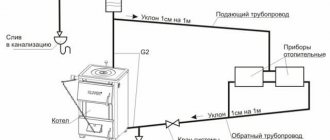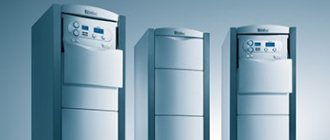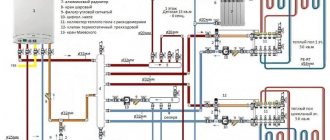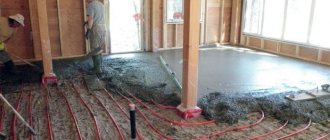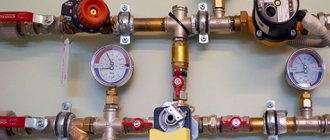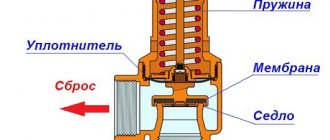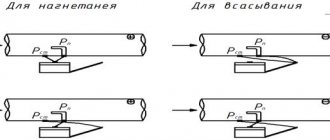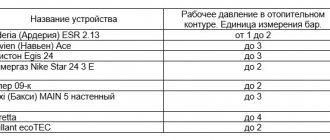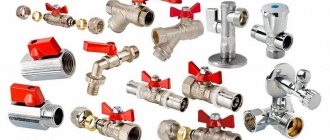Pressure in heating systems is the main reason for proper, coordinated and efficient communication of pipes and heat supply to a room or home, as well as the long-term use of units.
Working pressure is the overall coordinated work of the pump, pipes: generator, heat transfer and tank, which is calculated if you add all the indicators together.
In general, pressure is measured in the unit BAR. There are also such units as: atmosphere, joules, and so on. In most cases, the unit bar is indicated on heat transfer devices.
Why does the system need to be under pressure?
Heating system pressure is an important indicator. The main reasons for taking into account the pressure in the system:
- Correct heat supply. With proper distribution of pressure, heat will take into account consumption and save the budget, as well as provide a sufficient level of heat without interruptions;
- Durability of heating devices. Effective pressure does not damage the units and instruments of the heating system: radiators, pipes, taps, boilers and so on. Heating systems are installed at the initial levels of construction and repairs or alterations will entail huge costs and loss of time and comfort.
- Safety. The pressure level in the system will help to avoid emergencies in the form of: fire, water flooding or explosion of gas appliances.
Pressure in the heating system: what should it be and how to increase it if it drops
Following a failure of pressure in the heating system, a problem comes - the quality of heating the premises in the house decreases.
You can, of course, adjust the heating operation once and for a long time, but this period will not be indefinitely long. One day, the normal pressure in the heating system will change, and significantly. We will tell you how to keep the physical parameters of the coolant under control. Here you will learn how to ensure a stable speed of movement of heated water through the pipeline to the devices. You will understand how to obtain and maintain a comfortable indoor temperature.
The article proposed for consideration describes in detail the reasons for the pressure drop in closed and open systems. Effective balancing methods are given. The information presented for review is supplemented with diagrams, step-by-step instructions, photos and video tutorials.
Pressure in a closed system
A closed system is a system with a membrane expansion tank in the boiler room, instead of an open one on the roof. Also, such systems often operate using forced circulation.
In a closed system, the heating process occurs faster than in an open system, so the pressure level is higher than in an open one. Due to this, higher quality pipes and radiators are used, which results in a more expensive heating system.
If a closed heating system is installed in the house, it requires more attention when preparing for the winter period.
A closed heat transfer system has its own characteristics. In order for the heating to work most efficiently in a closed system, it is advisable to set the maximum pressure allowed by safety regulations - this is 2 BARA. On average, a pressure of 1-1.5 bar is considered normal.
When the pressure indicates a level greater than 2, then the cause of this situation should be identified. This may be due to overheating of the system, an incorrectly sized expansion tank, or its malfunction.
What pressure should be in underfloor heating?
Home / Communications / Heating / What pressure should be in underfloor heating
Today, individual gas boilers are becoming incredibly popular. And therefore, more and more people need to know what the operating pressure should be in the heating system in a private home. Not only the microclimate, but also the safety and durability of the equipment, which is quite expensive, depends on this.
The owner of a private house or apartment with an autonomous heating system needs to know several basic concepts:
- 1. Pressure is indicated in atmospheres, bars or megapascals.
- 2. There is static pressure in the network, which is created by water or other coolant. This type of pressure exists even when the boiler is not working.
- 3. The force moving water along the heating circuit creates dynamic pressure. It, in turn, affects all elements of the network from the inside.
- 4. There is a concept of maximum permissible pressure. If the pressure rises too much, an emergency situation may occur.
- 5. The most vulnerable link during pressure surges will be the radiator inside the boiler. Depending on the model, it can withstand approximately three atmospheres. Pipes and batteries are less fragile and can handle much higher rates. However, a lot also depends on the material from which they are made. Therefore, find out in advance which heating batteries are right for you.
So what exactly is considered work pressure? Another important fact to understand. This indicator is directly affected by the length of the pipeline, the number of storeys of the building, and the number of radiators in the system. Therefore, its value must be calculated at the project stage, taking into account all the features of equipment and materials.
For two- or three-story houses, the optimal indicator is 1.5-2 atmospheres. For housing with more floors, a working pressure of 2-4 atmospheres is permissible, and it is advisable to install additional pressure gauges on the floors to monitor the indicators.
Autonomous heating systems that are used in private homes are of two types:
- open, when through the expansion tank it communicates with the atmosphere, and the water circulates due to natural convection: heating, rising, cooling, falling,
- closed, when the system is isolated from the atmosphere, and the water inside it is pushed by a special pump.
For an open system to work properly, the boiler is installed at the lowest possible point, and the expansion tank at the top. The diameter of the pipes at the outlet of the boiler is wider, at the entrance it is narrower. This system is suitable for small, one-story houses.
The second option is more often used. The pressure in closed systems in small houses should also remain within 1.5-2 atmospheres; this is enough if the circuit is not too long and is not equipped with a huge number of radiators. If there are high floors or a large number of rooms in the house, it is possible to install an additional pump.
Please note that when initially filling the system with cold coolant, air may enter. After its removal, the initial pressure will drop, this is natural. Therefore, it needs to be raised again by adding water, but not brought a little to the working mark. After heating, following the laws of physics, the pressure will increase.
The pump is the main advantage of this system. Its power allows you to make the pipeline as long as you like, and the number of radiators as you require. Moreover, they can be connected both in series and in parallel. The second option is preferable because it creates less load on the boiler.
A closed system is also convenient for the off-season, because the presence of a pump allows you to set the heating to minimum levels.
Now that you know what pressure should be in the heating system, you need to learn how to check it. Any modern boiler is most often equipped with a pressure gauge with an arrow that shows the pressure level in the system. Such devices are more convenient than electronic ones because they do not require additional power.
However, one measurement point is not enough. Additional pressure gauges, in accordance with technical regulations, should be placed at the inlet and outlet of the boiler, at the highest and lowest segments of the system, before and after the pump. Additional pressure gauges in places where pipes branch will also come in handy. Together they will allow you to analyze and better control the situation. But the measuring instruments themselves only state a fact, but do not in any way affect what is happening in the circuit. They also need to be checked from time to time for serviceability and accuracy.
By checking the pressure gauges from time to time, you may notice that the pressure inside the system is increasing. This can happen for several reasons:
- you increased the temperature of the coolant and it expanded,
- the coolant movement has stopped for some reason,
- a gate valve (valve) is closed in some part of the circuit,
- mechanical blockage of the system or air lock,
- additional water constantly enters the boiler due to a loosely closed tap,
- during installation, the requirements for pipe diameters were not met (larger at the outlet and smaller at the inlet to the heat exchanger),
- Excessive power or flaws in the pump. Its failure is fraught with destructive water hammer for the circuit.
Open System Pressure
The operating principle of such a system is related to the simple laws of physics. The coolant in such systems most often moves without the help of special pumps. The uniqueness of the open heat supply system is the natural movement of the coolant.
Basically, the coolant in an open heating system is water, although there are individual cases.
A well-coordinated operation scheme is ensured by a tank that should be refilled with water to adjust the desired temperature and pressure.
Reasons for installing an open heat transfer system:
- Easy installation;
- A budget option;
- Sufficient heat supply which saves the budget;
- Can be used without a pump.
The algorithm of an open thermal transfer system allows you to automatically control the pressure in the tank, with proper installation and configuration of all circuits.
A little theory about pressure in the heating system
Where does pressure come from and what does pressure depend on?
While the pipelines, radiators and heat exchangers are without coolant, normal atmospheric pressure (1 bar) is observed in the system. As the heating installation is filled with water or antifreeze, the indicators will immediately begin to increase, albeit slightly. This is due to the fact that air is displaced, and liquid begins to act on the walls of all elements of the system from the inside. Cold liquid. This pressure appears due to gravity, even when the boiler has not yet been turned on and the pumps have not started pumping. The higher the pipes are spread, the larger it will be.
During the startup of the heat generator, the situation changes rapidly. As the temperature increases, the coolant expands and the pressure begins to rise sharply. The load on the walls becomes even greater when pumping equipment is activated for circulation.
It turns out that the water pressure in the heating system depends on the performance of the heat generator (heating temperature) and the power of the pumping equipment. It is very important what heating scheme is used, how hydraulic calculations are made, whether the components are correctly selected and installed, and how accurately the system is adjusted. For example, the smaller the cross-section of the pipe passage in a certain area, the greater the hydraulic resistance there will be, and the higher the pressure will be. Any narrowing will act this way, including blockages or air plugs.
Note that the pressure in the autonomous heating network in different areas is not the same. The reasons are simple:
- the return temperature is lower than in the supply pipeline (especially at the outlet of the boiler);
- the energy/initial speed that water receives from the pump as it moves along the circuit decreases;
- The cross-section of pipes for different sections is selected differentially, and the flow force can be regulated by shut-off valves.
What types of pressure are considered in thermal engineering
To understand the essence of the issue and not get confused, you need to understand the terminology. There are several definitions in popular publications:
- The static pressure of the heating system arises due to the force of attraction acting on the cold coolant. When the installation height increases by 1 meter, the pressure of the water column on the walls of pipes, instruments and devices increases by 0.1 bar.
- Dynamic. Appears when the coolant is pumped by a pump, or the liquid begins to move under the influence of heat.
- Working. It consists of static and dynamic. It will differ for different objects.
- Excessive. This is the positive difference between the measured pressure and the atmospheric pressure (barometer reading). It is this difference that we determine with pressure gauges installed in the heating system.
- Absolute. The sum of atmospheric and excess pressure.
- Nominal (conditional). An indicator characterizing the strength characteristics of equipment, which guarantees the service life declared by the manufacturer.
- Maximum. The maximum pressure at which the heating system can operate without failures or accidents.
- Crimping. After assembly or maintenance, the system is tested under load. What pressure is the heating under? Usually exceeding the working one by 1.2-1.5 times.
Operating pressure in the boiler
Standard 1.5-2 bar
Up to 2 floors 1.5-2 bar
More - up to 4 atmospheres.
Gas heating systems are one of the reliable heat supply systems used in the modern world and private homes. Many people, before planning to build a house, look for an area with a gasified resource in advance. Gas heating systems are the most automated and easy to install, as well as long-term use.
The principle of operation is gas as a carrier, which does not freeze and does not require discharge into the sewer.
Gas heating systems have a large selection on the market, both on the heat transfer generator side and on the system side.
Pressure level in the expansion tank
The standard pressure level in the tank is 1.5 bar; it is worth considering the individual passport of each manufacturer. Different factories have their own instructions and applications.
In small rooms up to 200 meters, the pressure in the tank is 0.7-1 bar and reaches a level of 2 bar in individual cases.
Pressure in apartment buildings
Multi-storey buildings with separate apartments require careful and detailed inspection and adjustment of pressure in the thermal system. It is worth following a special table, standards and pressure indicators. You also need to understand different types of indicators.
The operating pressure in a room where heating must work efficiently for many families and is controlled by city services is monitored in detail throughout the required heating period.
Each residential building or complex already has its own indicators set by the engineer. Here are the standard pressure figures in an apartment building:
- 5 floors and above. 2-4 atmospheres.
- 6 and up to 10 floors. 5-7 atmospheres.
- Above 10 floors. 12 or more atmospheres, depends on the level of radiators, pipes, and so on. Pressure control in apartment buildings is a complex process and requires a detailed diagram and careful operation.
The pressure of thermal systems, regardless of choice, requires detailed monitoring and maintenance. The best way is to lay out the correct diagrams in advance in the architectural project and write down the pros and cons and take into account the budget, terrain and other reasons.
Consequences of instability in circuits
Insufficient or higher pressure in the heating circuit is equally bad. In the first case, some of the radiators will not effectively heat the rooms; in the second, the integrity of the heating system will be compromised and its individual elements will fail.
An increase in dynamic pressure in the heating pipeline occurs if:
- the coolant is too overheated;
- the pipe cross-section is insufficient;
- the boiler and pipeline are overgrown with scale;
- air pockets in the system;
- a booster pump that is too powerful is installed;
- water replenishment occurs.
Also, increased pressure in a closed circuit is caused by incorrect balancing of the taps (the system is overregulated) or malfunction of individual regulator valves.


